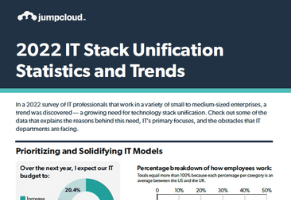In today’s ever-changing digital world, at a certain point, many organizations find that they have an overabundance of tools and software that each department has purchased over time. This is especially true for the IT department — their job revolves around digital infrastructure, and they often end up with too many unnecessary or clunky tools after a while.
While there is no single perfect time to address IT tool sprawl, we’ve found that the majority of IT organizations are interested in unifying their technology stack, an IT trend beginning in 2022. A variety of factors play into this, including world events, budget changes, current popular working models, and an overall desire for less digital clutter.
Prioritizing and Solidifying IT Models
When prioritizing IT, and specifically technology stack unification, it’s important to consider the IT budget, how much of that budget is spent on what, what work model your organization uses (remote, hybrid, in-office), as well as the overall employee experience. IT trends in 2022 show that:
- 74.2% of IT professionals expect an increase in the IT budget over the next year.
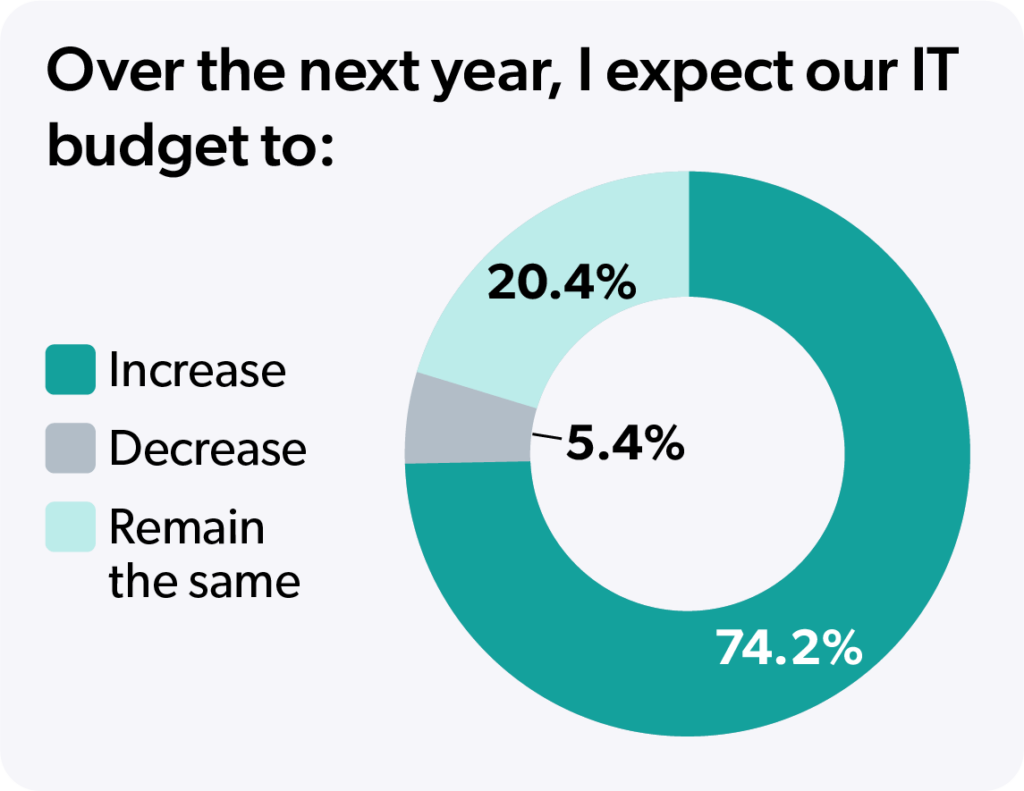
- 48.9% of IT professionals spend between 10 – 25% of their yearly budget on licensing fees.
- 25.2% of IT professionals spend between 25 – 50% of their yearly budget on licensing fees.

IT budget expectations change from year to year, but when you take a deeper look into what that money is being spent on, sometimes it’s easy to see where money is practically being thrown away. Looking into the total cost of ownership (TCO) of each product being used can help facilitate this process.
Then, by unifying the technology stack, money that was once going toward a plethora of software and tools, can be better spent elsewhere, such as on new equipment, on salaries or bonuses, on better support for the few tools still in use, and more.
Remote, Hybrid, and In-Office Work Models
From April 2021 to June 2022, the percentage breakdown of employees working in the office vs hybrid vs remotely has changed.
- April 2021: 22.6% remote; 42.5% hybrid; 40% office
- October 2021: 32.4% remote; 29.6% hybrid; 40.8% office
- June 2022: 24.8% remote; 32.5% hybrid; 47.1% office
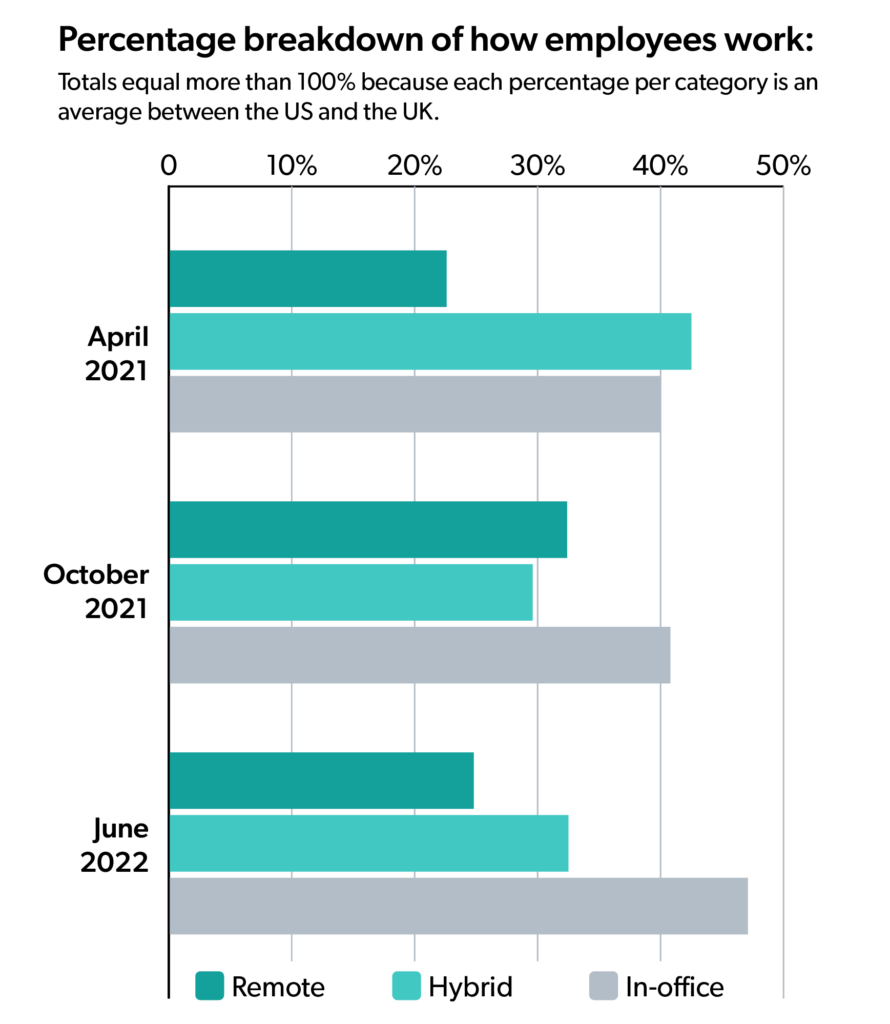
Organizations across the world are taking advantage of modern working models, which means that they need identity and access management (IAM) solutions that can span across remote and in-office employees. Managing different types of workers sometimes results in IT tool sprawl, which can be easily avoided with a modern directory solution (i.e., a single tool to manage everyone regardless of location).
Remote Work Models More Secure, Easier to Manage
- In 2021, 55.8% of IT professionals reported ongoing remote worker management as an ongoing challenge.
- But, in 2022, only 45.5% of IT professionals reported this as a predominant challenge.
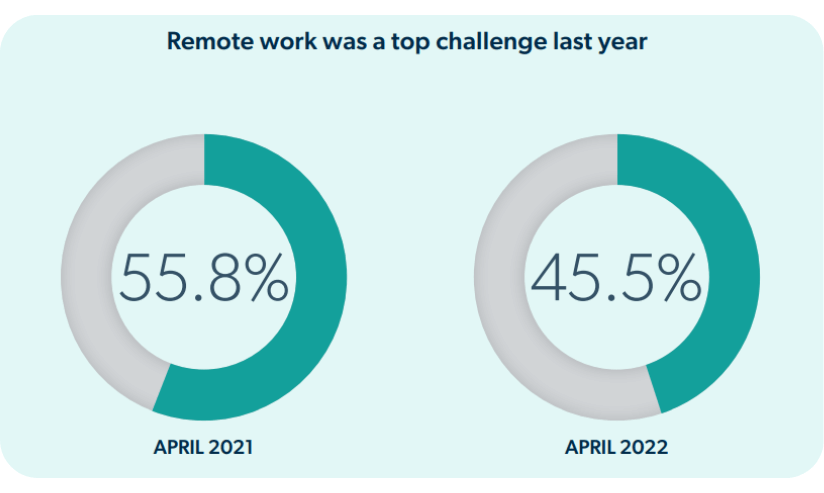
- In 2021, 74.4% of IT professionals agreed that remote work makes it harder for employees to follow good security practices.
- But, in 2022, only 58.5% of IT professionals agreed with this statement.
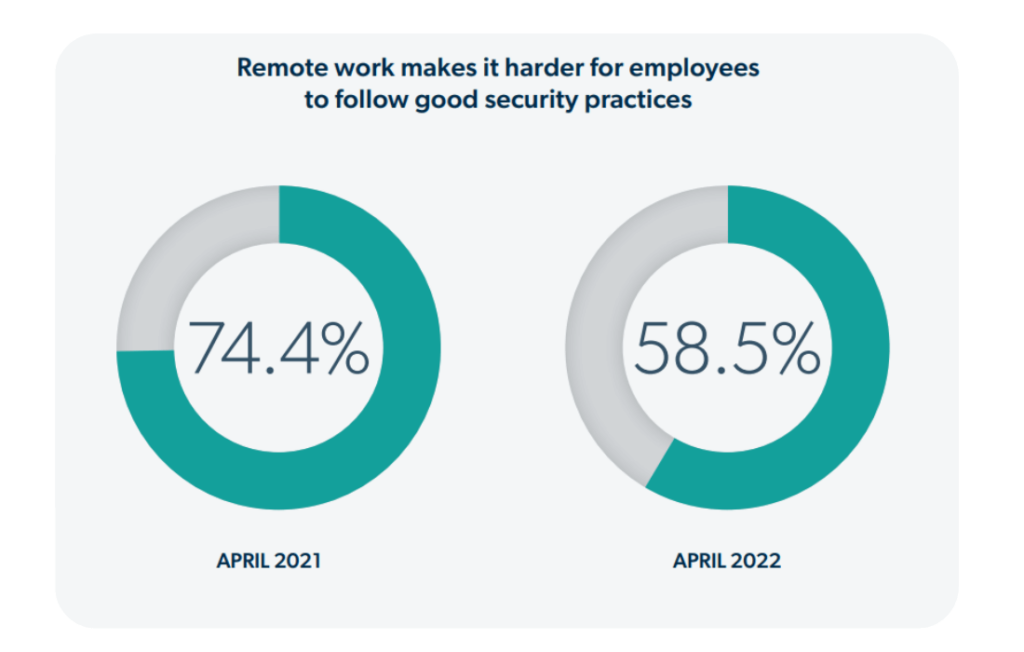
These respective 10.3% and 15.6% decreases show that remote work management is improving, along with security practices.
User Account Management Decisions
- Only 36.6% of IT professionals say that all user accounts are centrally managed, with permissions and security measures controlled by IT at all times.
- Another 32.9% say that some accounts are centrally managed, with permissions and security measures controlled by IT wherever possible.
- This means that approximately one third or 30.5% of organizations’ accounts remain unmanaged.
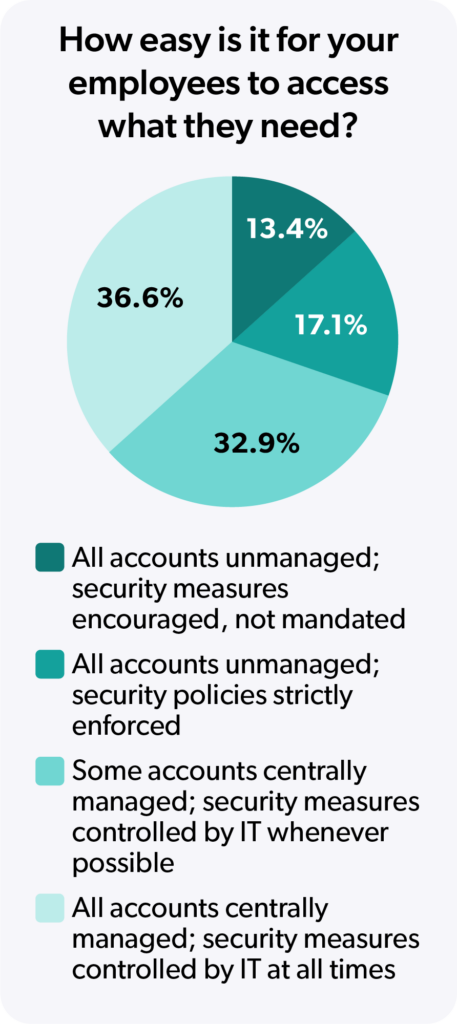
When accounts remain unmanaged by IT, users sometimes take it upon themselves to create their own fixes for any issues that arise, resulting in what’s called Shadow IT. However, this can be mitigated when IT unifies their tech stack and pulls all users under a single umbrella to be managed and supported in the most efficient way possible.
A Focus on the User Experience
- 81.8% of IT professionals agree or strongly agree that the employee experience is an important factor to consider when making IT solutions purchasing decisions.
- 41.1% of IT professionals said that, on average, employees use 3-5 different accounts to do their job.
- 43.7% said that, on average, employees use 6+ different accounts to do their job.
- This means that only 15.2% of IT professionals said that employees only need 1-2 accounts to do their job.
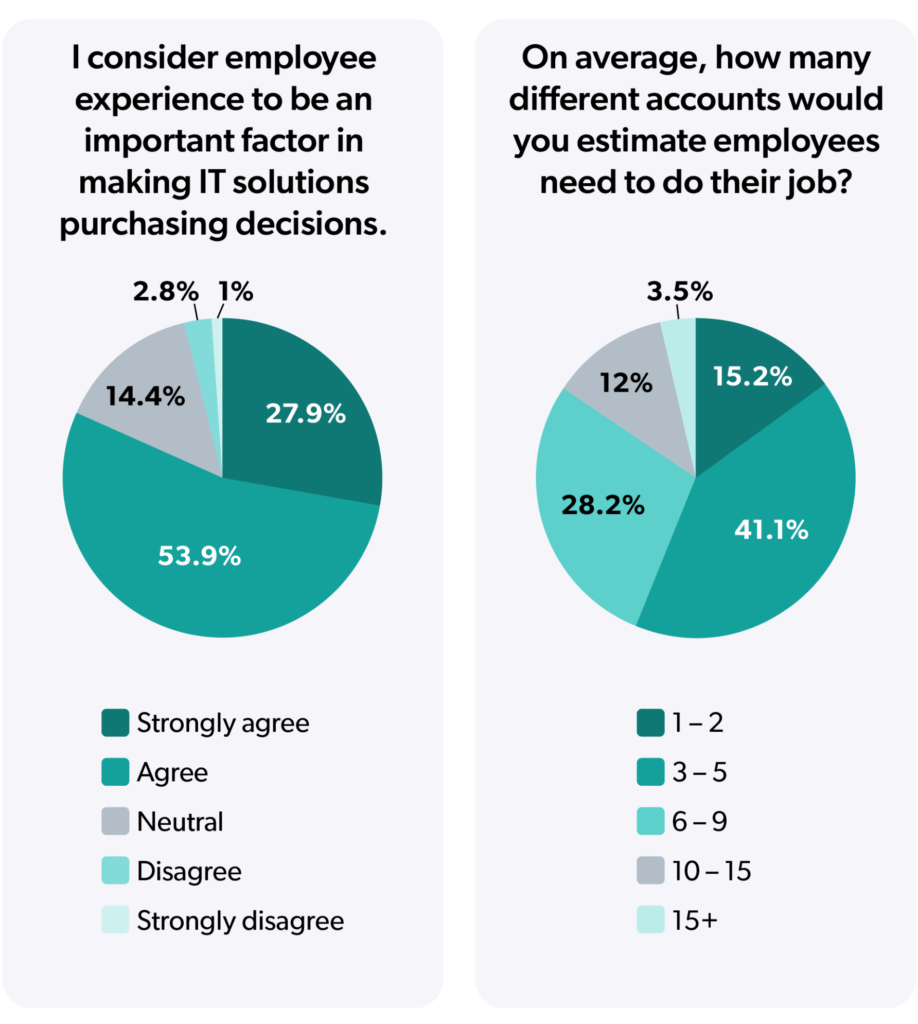
There’s clearly a sizable opportunity for IT professionals to whittle down the number of necessary employee accounts, especially when there’s a focus on the overall employee experience. Realizing how disjointed day-to-day activities become when users have to manage a bunch of different accounts can help push IT teams to unify their tech stack to make this possible.
Trust in IT May Help with IT Infrastructure Consolidation
Organizations that prioritize IT end up with better streamlined processes, which make employees’ day-to-day activities more productive, secure, and enjoyable. IT sets the precedent for how other employees get work done. So, by trusting IT with an increased budget and the freedom to unify their tech stack, you can typically expect to see improvements across a variety of areas such as: efficiency, compliance, user experience, and more.
Businesses Are Investing in Support for IT
There’s a correlation between IT budget increases and higher usage of MSPs, so if internal IT teams are investing more of their budget in MSPs, they may need to cut back on other expenses. Bringing an MSP on board is a great opportunity for technology stack unification — some products may not be needed at all anymore, an MSP may have better tool recommendations, and more time will need to be spent on vendor management.
- In 2021, 84% of organizations used or considered using an MSP.
- But, in 2022, 87.5% are currently using or are considering using an MSP.
- 37.9% of organizations use an MSP to support their internal IT team.
- 27.1% of organizations use a single MSP to completely manage their IT.

Biggest IT Focus in 2022 is Security
IT professionals are interested in finding a balance between reliable security measures and a streamlined user experience, but world events are putting further pressure on the security front.
IT professionals listed their biggest challenges in 2022:
- 59.4% said security is their primary concern.
- This was followed by 48.1% stating that device management is a concern.
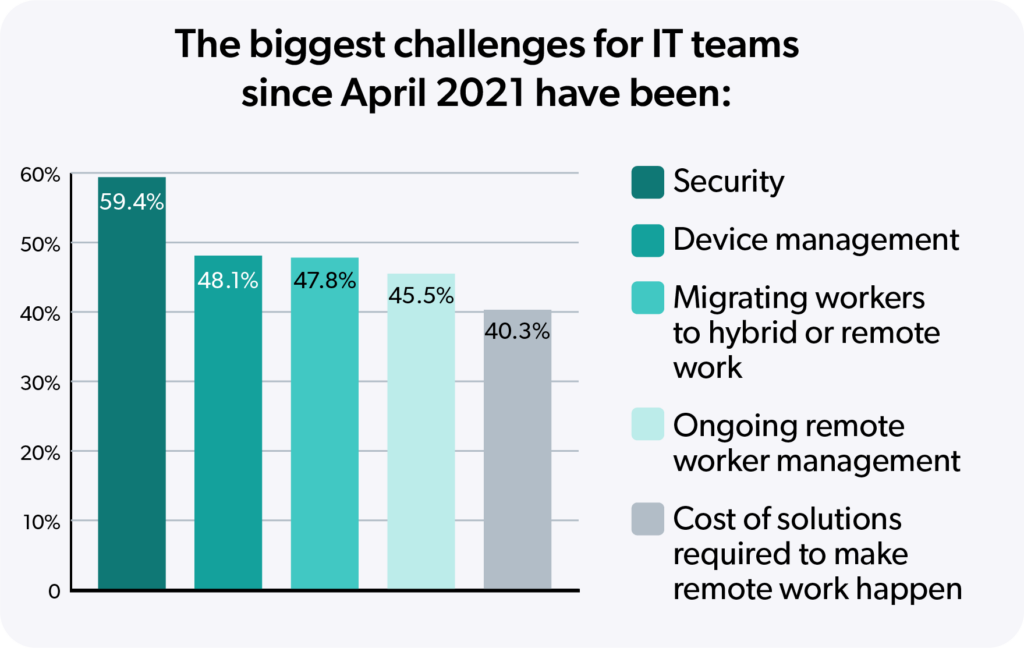
Need for Balance Between Security and UX
Although there are sizable concerns around security, many feel that extra security measures hurt the user experience, which makes them second guess this decision.
- 66.1% IT professionals agree that increased security measures are detrimental to the user experience.
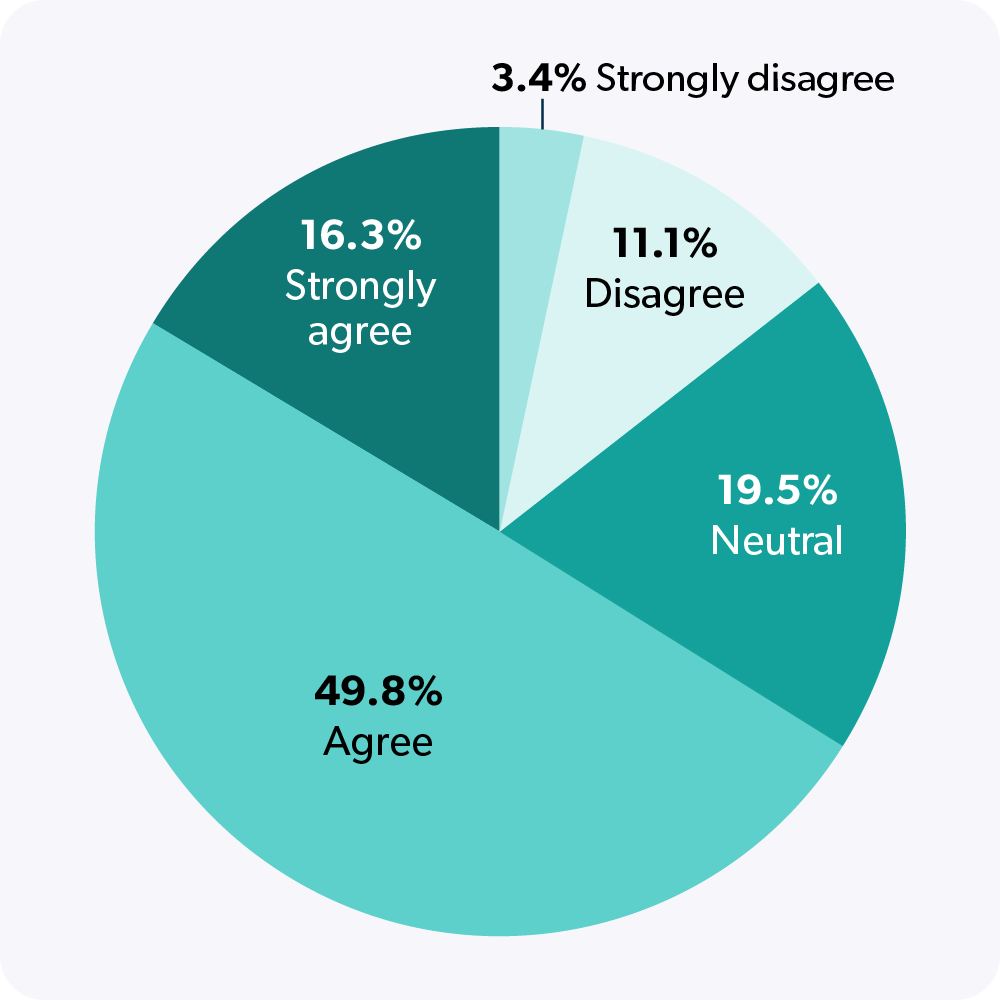
Ukraine War Sparks Security Concerns
One reason behind the expanded focus on security involves any major world events, especially the war in Ukraine.
- 58.6% of IT professionals agree the war has increased their organization’s security concerns.
- 64.4% of those respondents reside in the United States.
- 52.7% of those respondents reside in the United Kingdom.

Top Three Security Concerns Overall
- 39.7% of IT professionals are most concerned about network attacks.
- 30.9% are most concerned about ransomware.
- And, 30.6% are most concerned about software vulnerability exploits.
These total to more than 100% because admins were asked to select up to three from 12 options.
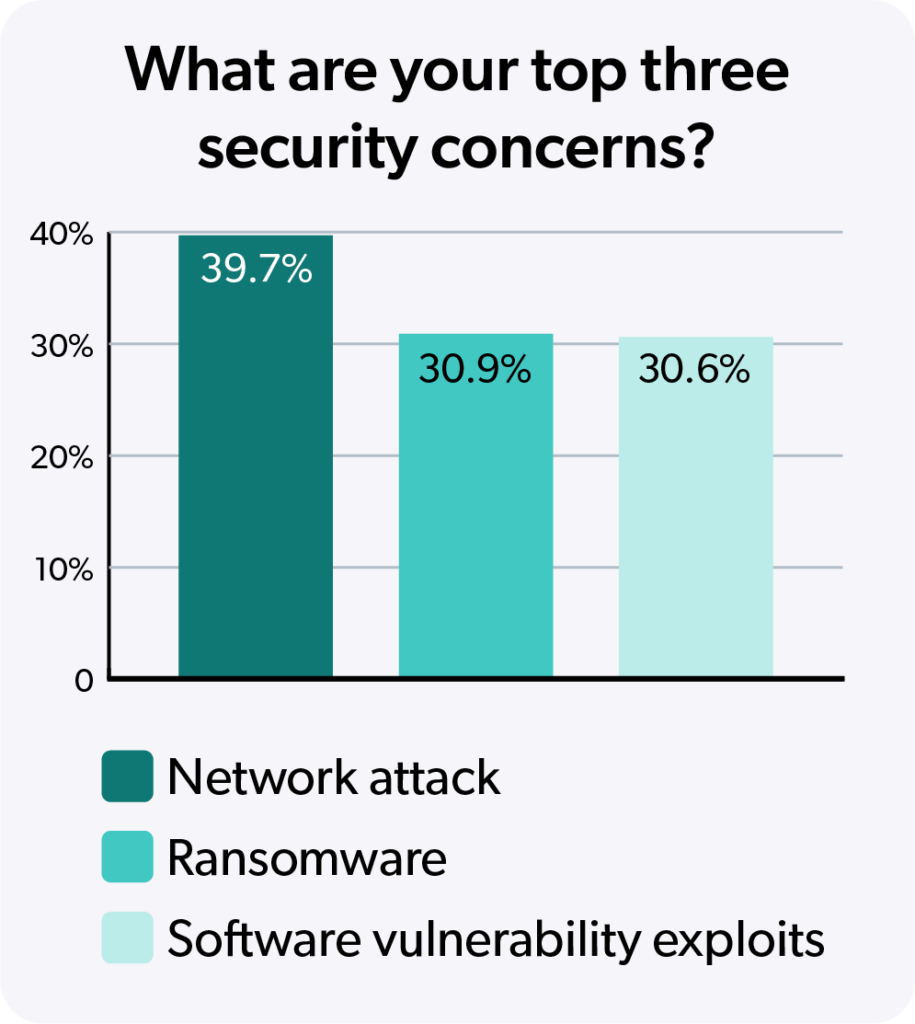
Admins Looking for Best Security Solutions
IT admins are looking for a balance between having all the tools they need to minimize security risks while also making sure all those tools integrate with one another. And, as counterintuitive as it may sound, adopting more security tools creates more attack vectors for bad actors. The more software you use and vendors you give your information to both add to your overall security risk.
Overall Growing Need for Technology Unification
IT professionals are interested in technology consolidation for a variety of reasons: to improve user management and the user experience, reinforce security, reduce tool sprawl, save budget by doing more with less, and to lessen the resources going toward general IT vendor management.
Another thing to keep in mind is identity lifecycle management (ILM) and how much time IT professionals spend on it. When there’s a plethora of ILM tools in the mix, this job gets even more cumbersome, especially in organizations that are short-staffed and burnout is common.
Labor Shortages Create a Need for Change
Not only are major world events having a significant impact on many organizations, but general labor shortages are causing separate issues.
- 31.4% of IT professionals say that labor shortages have been a significant to serious business limiter throughout 2021 and 2022.
- Only 21.3% of IT professionals stated that labor shortages have had no impact on their organization.
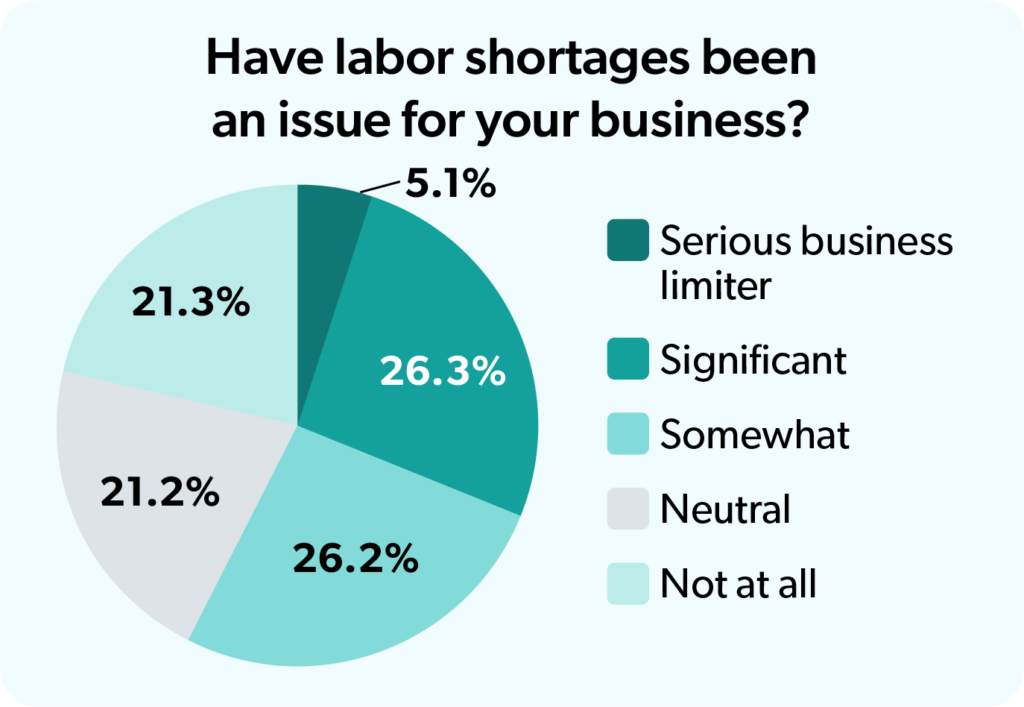
The Risk of Tool Creep
Identity lifecycle management is one important part of IT’s role in an organization, but it’s definitely not the only thing IT is expected to do. So, when IT uses multiple tools just for ILM, plus separate tools for other tasks, they can easily end up with excessive tool sprawl that eats up the budget and their sanity.
- 42.7% of IT teams use 2 – 3 tools for identity lifecycle management.
- And, 38.1% of IT teams use 3+ tools.
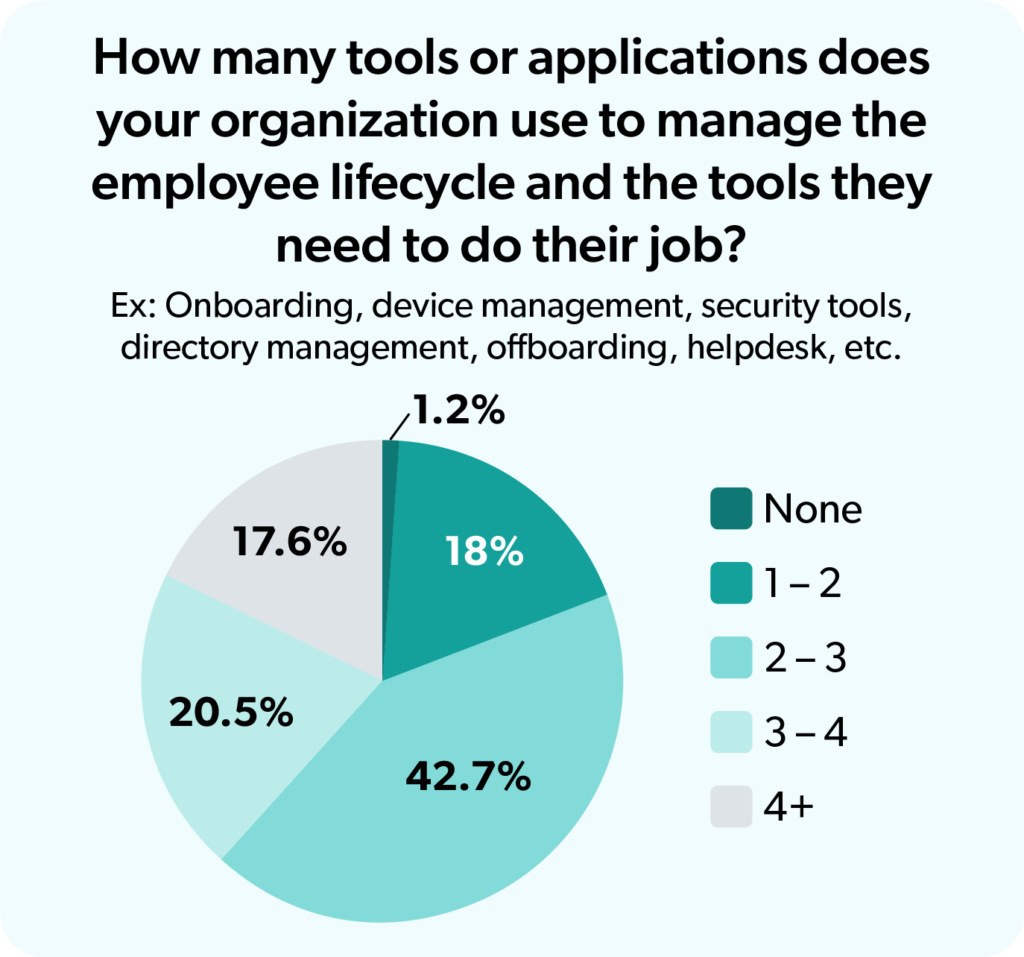
The Desire for a Single Tool
While the majority of IT professionals use multiple tools for identity lifecycle management, IT trends show a desire for technology consolidation.
- 74.6% of IT professionals agreed or strongly agreed that they’d prefer a single tool or solution for identity lifecycle management.
- This is up from 2021, when only 69.7% agreed with this statement.
- Yet, only 18% actually use only 1 – 2 tools for identity lifecycle management.
- This means that 56.6% of IT professionals want to unify their technology stack but haven’t done it yet.
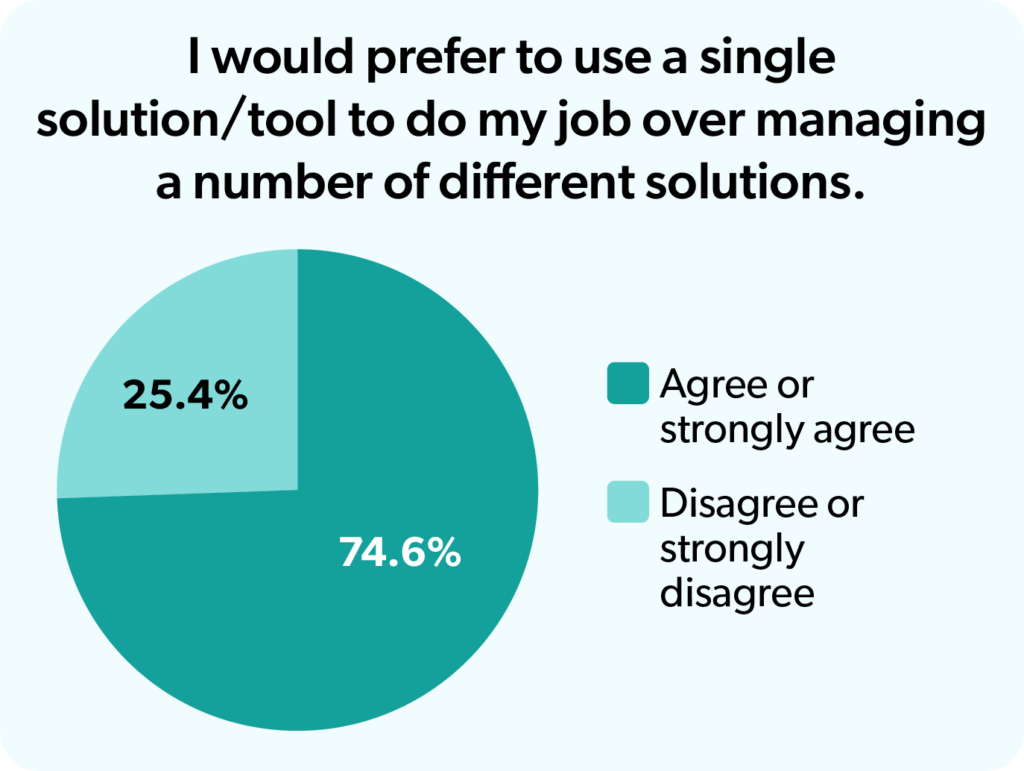
IT Vendor Management Hurdles
IT trends in 2022 also highlight how much time IT professionals spend working with vendors.
- 39.2% of U.S. and U.K. IT professionals spend 25% or more of their time each day communicating with vendors.
- 13.5% of U.S. and U.K. IT professionals spend 50% or more of their day communicating with vendors.
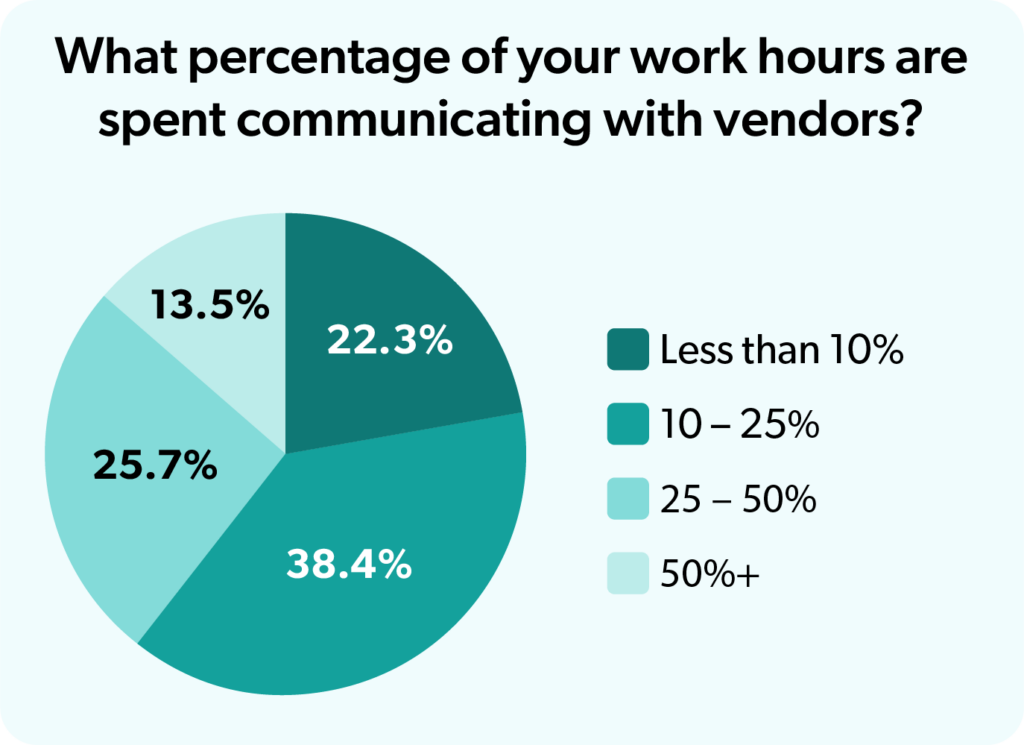
When just looking at the U.S. statistics:
- 45.3% of U.S. IT professionals spend 25% or more of their day communicating with vendors.
- 17.6% of U.S. IT professionals spend 50% or more of their day communicating with vendors.
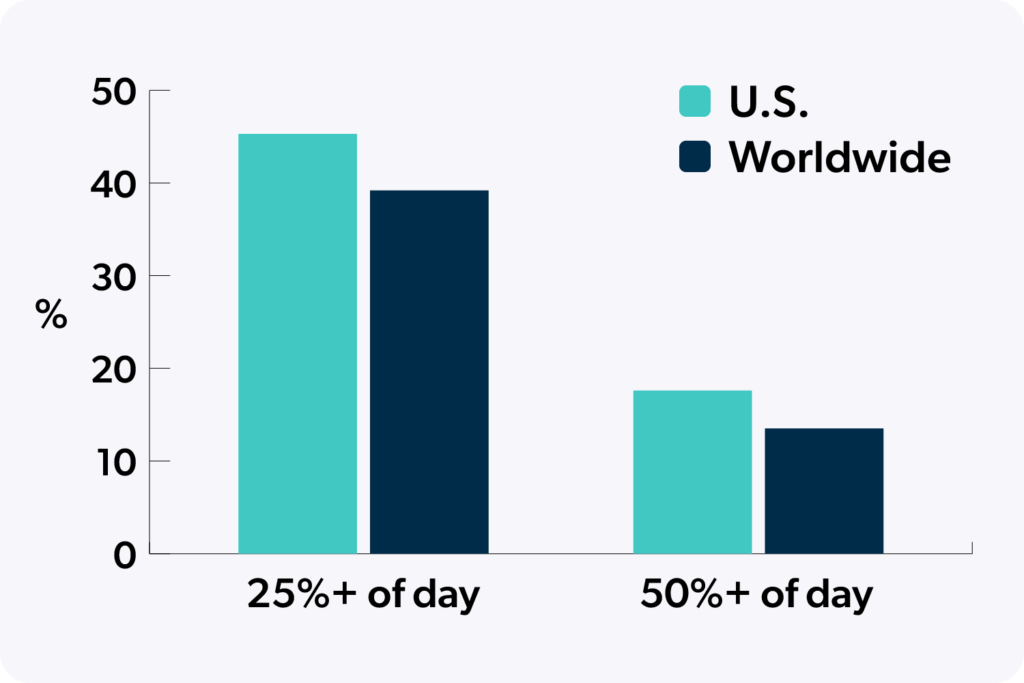
These numbers alone show how much opportunity there is for IT tech unification to give IT professionals a significant chunk of their day back to handle other important tasks. By unifying tech and consolidating IT vendors, IT will have fewer points of contact to deal with on a day-to-day basis.
Top Three Reasons Admins Aren’t Pursuing IT Infrastructure Consolidation
Although tech consolidation is highly sought after, it doesn’t always feel possible in every situation. The top three reasons that IT professionals don’t want to consolidate IT products are:
- 35.7% of U.S. and 46.9% of U.K. IT professionals said that no single product meets all of their needs.
- 32.5% of U.S. and 36.9% of U.K. IT professionals said they don’t want to be dependent on a single product.
- 31% of U.S. and 37.7% of U.K. IT professionals said they have too much existing infrastructure to unify.
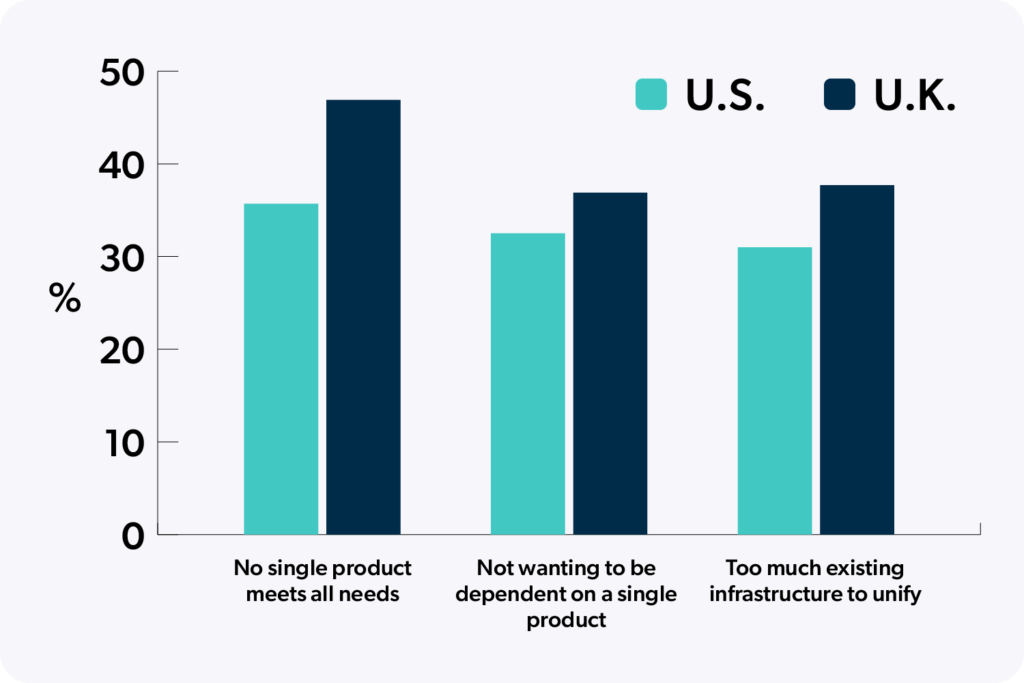
Read the Full Report
Technology unification is a big trend in 2022, but there’s even more on the minds of many IT professionals in small and medium-sized organizations. From budget and security concerns, to world events and economic worries, there’s a lot more to discover in the full, in-depth 2022 SME IT Trends Ebook.




